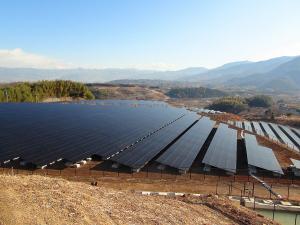
Stringent environmental regulations may undermine climate goals and renewable energy production, study finds
Prioritizing regulatory stringency as the primary tool for climate mitigation may inadvertently exacerbate climate change and heighten energy security risks.
SHARJAH, EMIRATE OF SHARJAH, UNITED ARAB EMIRATES, July 21, 2025 /EINPresswire.com/ -- A new study published in Energy Policy challenges conventional wisdom on environmental policy. The findings suggest that imposing strict regulations on pollution and slapping a price on environmentally harmful practices may inadvertently worsen climate change and heighten energy security risks. (https://doi.org/10.1016/j.enpol.2025.114634)
Contrary to widely accepted approaches that prioritize regulatory stringency as the primary tool for climate mitigation, the study highlights the pivotal role of digital governance and the circular economy in enhancing renewable energy output and addressing climate challenges more effectively.
Digital governance refers to the effective and responsible utilization of digital resources by organizations to achieve strategic objectives. In the context of the circular economy, organizations aim to optimize resource use by minimizing waste and promoting the reuse and recycling of materials to extend their lifecycle.
This study, led by the University of Sharjah in the United Arab Emirates (UAE), in collaboration with academic peers in Jordan and Pakistan, examines the impact of digitization, the closed-loop economy, and regulatory rigor on environmental governance of renewable energy Production (REP) sources.
The authors note that their motivation stems from the observation that prior research has predominantly focused on traditional macroeconomic determinants of renewable energy production, often overlooking emerging factors such as digital government, circular economy, and environmental regulatory stringency.
They argue that although climate change and its consequences—particularly global warming—are pressing concerns for governments, industries, and the public, existing literature has largely remained confined to examining macroeconomic and environmental policy measures aimed at reducing emissions and mitigating climate impacts.
“However, the role of digital government, circular economy, and environmental regulation taxes on REP have not been adequately assessed,” the authors state. Their research, therefore, seeks to investigate the relationship between digital governance, circular economy practices, environmental regulation taxes, and renewable energy production.
To address this, the study employs three econometric techniques commonly used to handle complex data and endogeneity: Two-Stage Least Squares (2SLS), Generalized Method of Moments (GMM), and Smoothed Instrumental Variable Quantile Regression (SIVQR).
The authors’ analysis is based on extensive data collected from 27 European economies spanning the period 2010 to 2022, covering indicators related to renewable energy production, digital governance, circular economy, and environmental regulatory stringency.
The findings from the 2SLS and GMM models highlight the significant positive influence of digital governance and circular economy on REP. In contrast, environmental regulatory stringency does not exhibit a statistically significant effect.
Additionally, the study reveals that logistics performance, GDP growth, and digital financial inclusion contribute positively to REP, whereas natural resource rents and foreign direct investment (FDI) are associated with declines in REP.
Regarding the SIVQR results, the authors find that digital governance positively affects REP only at higher quantiles, while the circular economy demonstrates a consistent positive relationship across all quantiles. Conversely, environmental regulation taxes tend to negatively impact REP in most quantiles.
The authors present their findings as valuable contributions that offer practical guidance for policymakers on how digital governance, the circular economy, and regulatory stringency affect renewable energy development.
They urge policymakers to strengthen the integration of digital technologies in governmental operations, emphasizing that digitization plays a crucial role in facilitating the development and management of renewable energy initiatives. In this context, they urge policymakers to “provide incentives and create possibilities for … digital infrastructure development.”
Furthermore, the authors recommend that governments “should enhance digital literacy among energy professionals,” enabling them to effectively engage with emerging technologies. They also call on governments “to establish laws and regulations that must promote digital governance practices, which are vital in efficiently monitoring renewable energy projects.”
A key emphasis is placed on the incorporation of circular economy principles into renewable energy development (RED) policies. Policymakers are encouraged to design frameworks that align with circular economy ideals, while investors are advised to favor projects that embody these principles.
“The renewable energy sector can benefit from the circular economy principles by increasing the lifespan of renewable energy items and power plants,” they write.
The authors stress that governments should implement policies aimed at resource efficiency in renewable energy generation. This includes offering “incentives to entrepreneurs” who utilize recycled materials, design products for durability and reuse, and minimize waste throughout the production process.
“As a result, through digital governance, policymakers help develop an environment of transparency and accountability, building investor confidence and attracting funding for renewable initiatives,” the authors note.
Despite the significance of their findings, the authors candidly acknowledge “certain limitations” in their analysis. They caution that the results may be subject to bias due to the temporal and regional correlation among the 27 European countries included in the study.
Another limitation they highlight is the geographic scope of the research, which is confined to European economies. They note that these countries differ significantly from those in Asia, Africa, and the Americas in terms of political systems, economic structures, institutional frameworks, and social contexts. As such, they recommend that future research undertake comparative analyses across these global regions to enhance the generalizability of the findings.
LEON BARKHO
University Of Sharjah
+971 50 165 4376
email us here
Distribution channels: Companies, Energy Industry, Environment, Natural Disasters, Science
Legal Disclaimer:
EIN Presswire provides this news content "as is" without warranty of any kind. We do not accept any responsibility or liability for the accuracy, content, images, videos, licenses, completeness, legality, or reliability of the information contained in this article. If you have any complaints or copyright issues related to this article, kindly contact the author above.
Submit your press release
